About Yala Block 01 Safari
The Southern Block 01 Of Yala National Park - Our Classic Safari Tour
Why, this is the best tour
- Yala Block 1 is the most popular safari area of Yala and attracts almost all of the visitors entering the Yala National Park. Always a rewarding tour. It can easily be considered the best area of Yala for wildlife spotting.
- This is the busy part of the national park where you can’t expect to get Yala for yourself but we do what we can … On this tour, through our planning, the biggest crowds are almost avoided.
- Access into Yala is via the northern Katagamuwa entrance into southern block 1. We will avoid entering and leaving the park amidst jeep-traffic. We enter a little after the peak morning dawn crowds and a bit before the evening crowds leave at 6 pm.
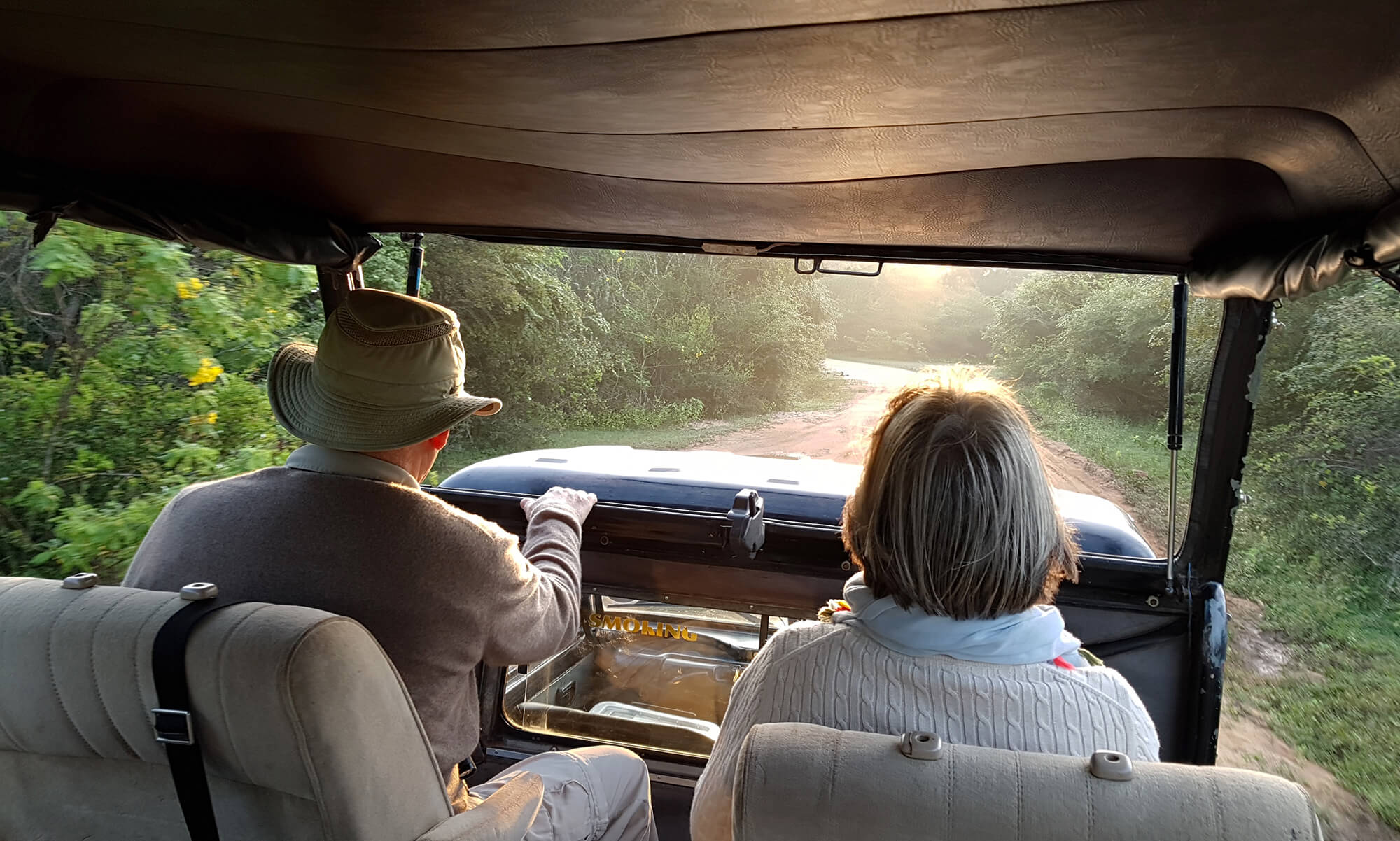
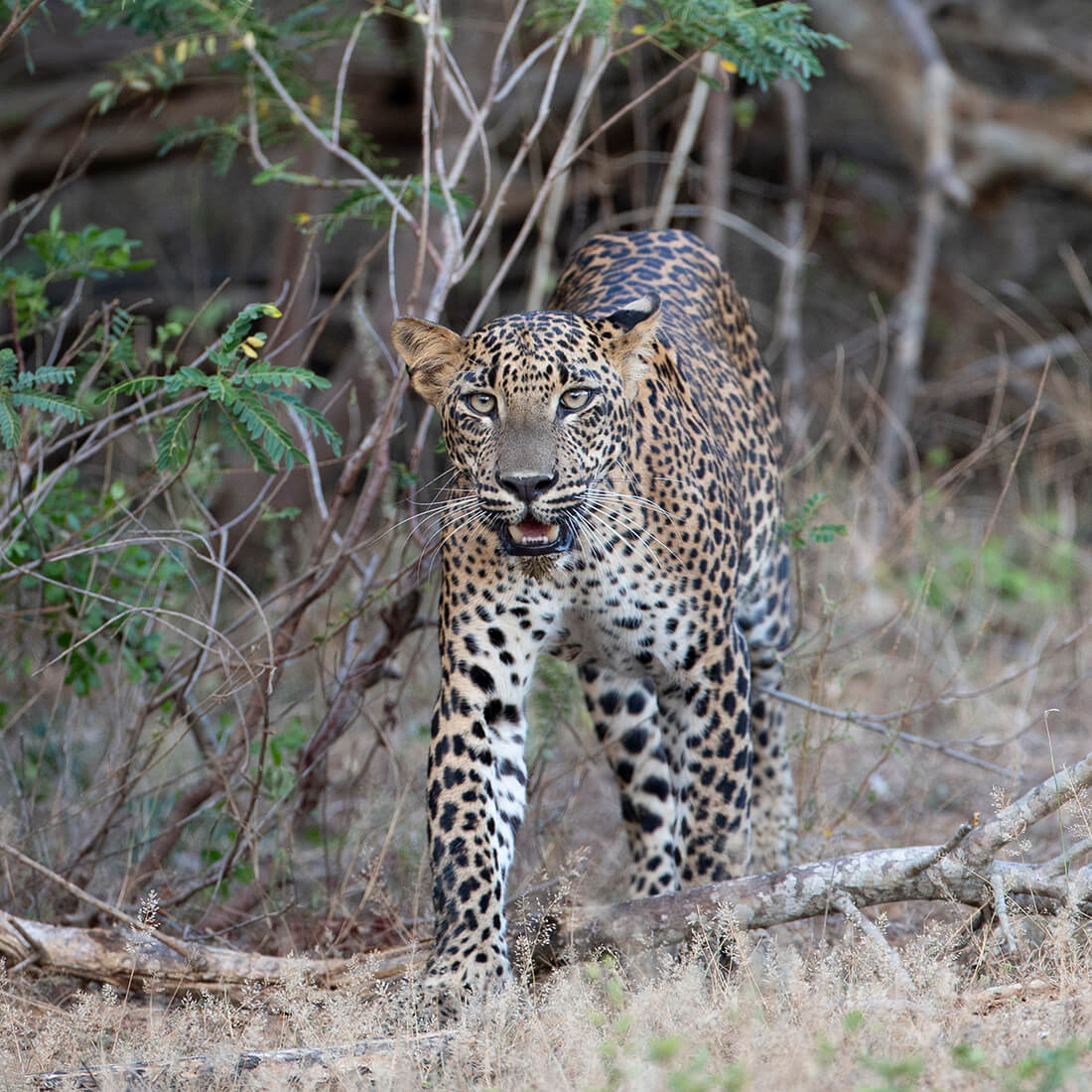
Access into Yala Block 1
We operate full day safari tours via the Katagamuwa entrance; a northern entrance into the southern part of Yala.
Block 1 is the famous area of Yala National Park and all visitors to the park go there. But far fewer jeeps enter the national park via Katagamuwa compared to the main Palatupane access point, near the south coast.
The popularity also means that you can’t expect privacy and sightings unspoiled by other jeeps and guests but our full day tour is planned to avoid congestions and ‘jeep jams’ as much as possible.


Landscape and Water
The landscape is diverse as are animal and bird sightings. Southern parts of Yala National Park are more dry with arid climate. But many waterholes scattered across Yala block 1 are vital for wildlife and all waterholes attract various animal species and birds.
The landscape is a remarkable blend of huge rocks, thorny bush trees, sandy beaches, fresh water and marine wetlands, lagoons, dry monsoon forests and open grasslands.
Man-made lakes (tanks) are essential water reservoirs in Block 1 and are ideal habitats for many water birds. Natural surface water only appears in low-lying places, in wet-season streams and lagoons. Water pools in rocks are also an important source of water for wildlife; these pools can contain water year-round.

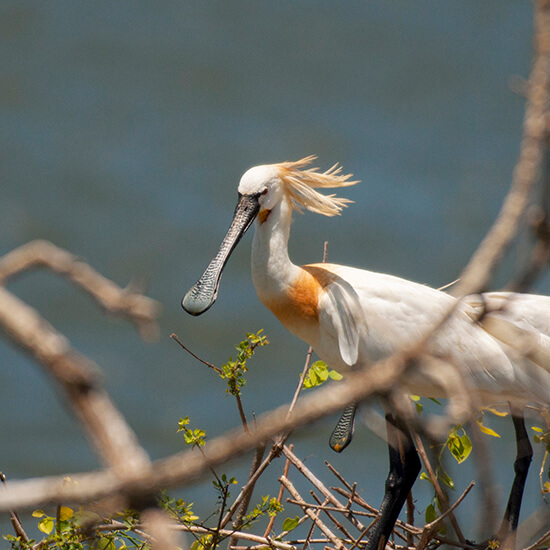
Water Holes Mean More Sightings
Waterholes is a key to more sightings. Traditionally Block 1 is the only block of Yala National Park that has to, some degree, been “managed”.
All waterholes are artificial, man-made, and help wild animals to survive during dry periods; which is extremely essential because severe droughts are common.
Access to water enables a higher wildlife density. Another bonus is that waterholes help human safari visitors because waterholes are places where more sightings can happen.
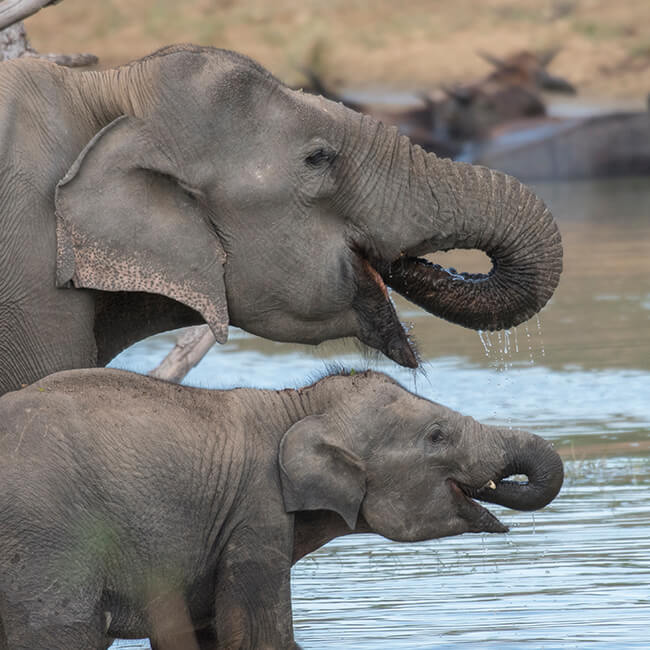
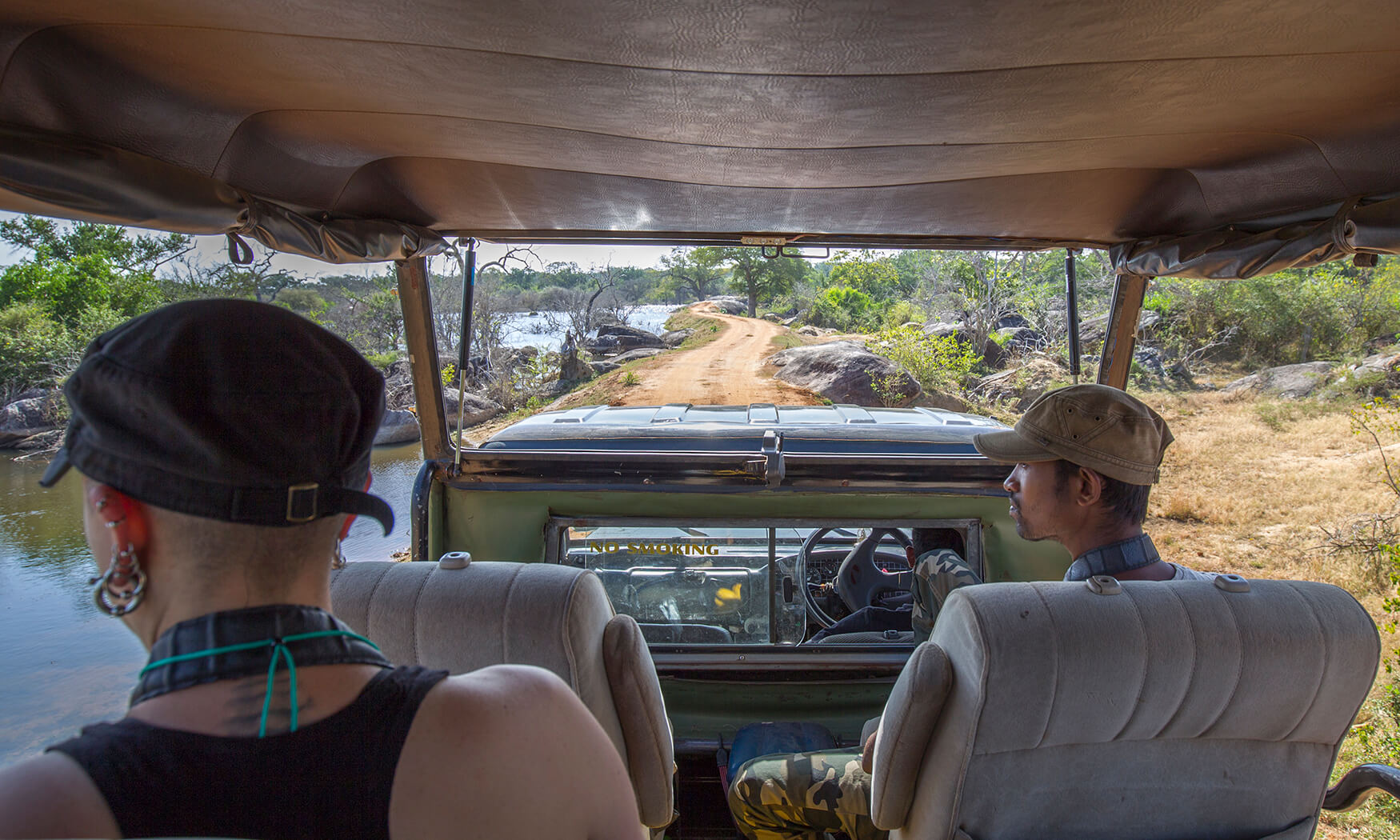
Wildlife Sightings and Popularity of Yala Block 1
The popularity of Block 1 with a lot of jeeps can be upsetting for some visitors but the great irony is that the success in terms of sightings (as well as visitor numbers) in Yala Block 1 is partly due to the safari traffic itself.
The reputation of the area for safaris means that wildlife is seen more, the animals are used to jeeps and less likely to run and hide. Wild animals here, are habituated to the jeep traffic and less elusive than ‘unspoiled’ animals without “safari experience”…..
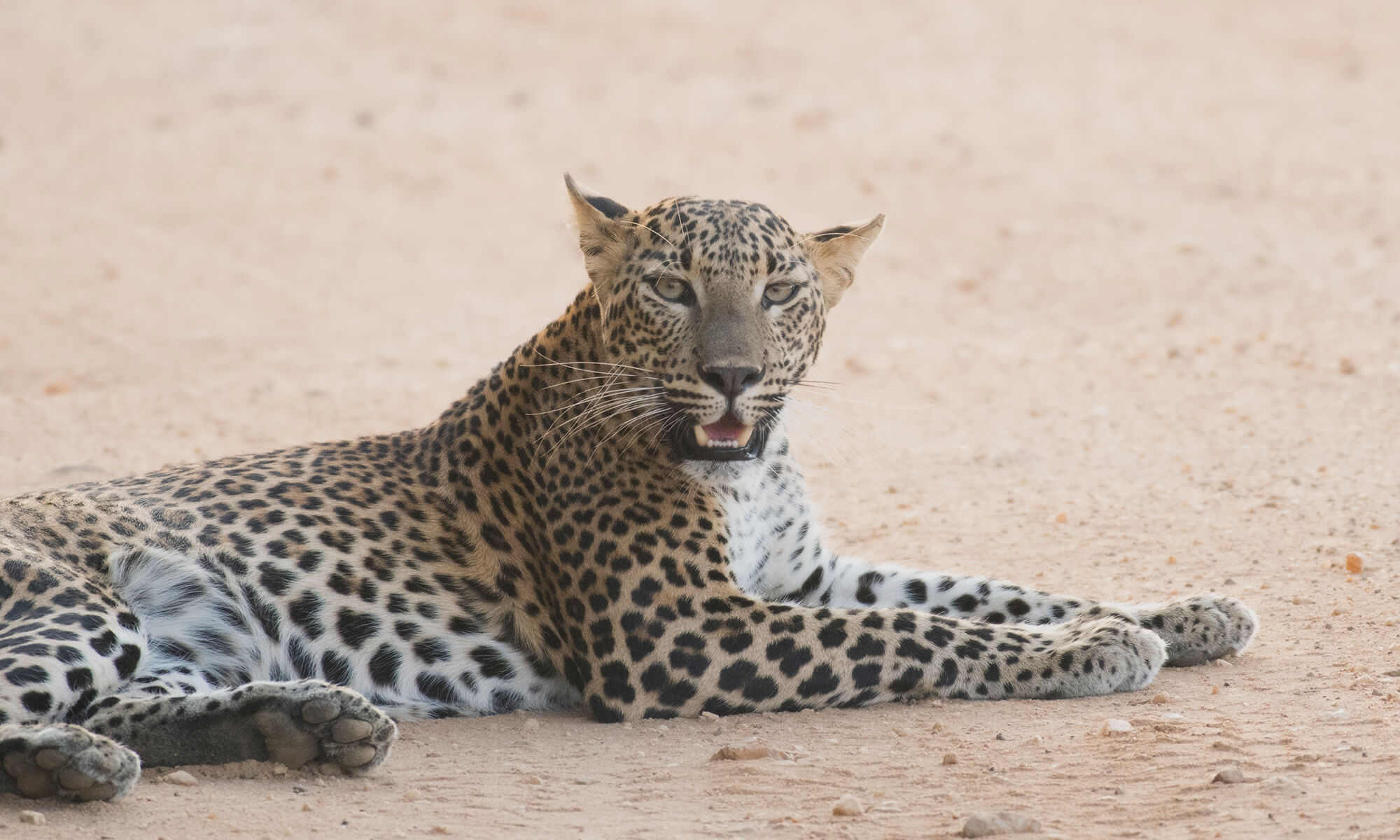

Safari Jeeps Facilitating Conservation ?
We strongly believe that the density of certain species of animals is higher in Block 1 because the safari activity has a positive effect on conservation and protection of wildlife; there is less poaching than there would otherwise be.
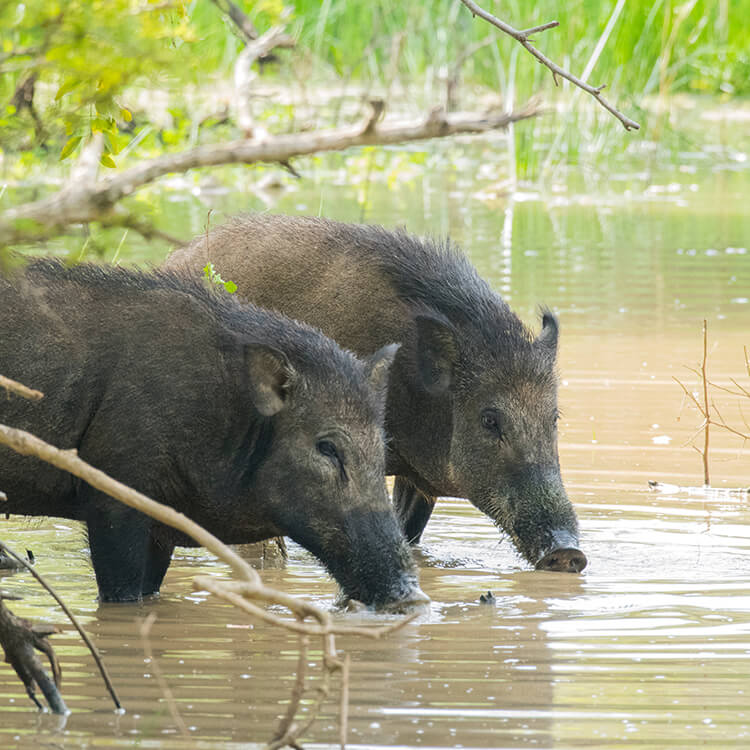

Elephants
Since most of the elephants in Block 1 are used to jeeps, it is easier to get sightings. Here elephants are more relaxed towards human presence than elephants in other parts of Yala or outside national parks, closer to farmer communities.
A behavioral difference is also worth to note. In Block 1 elephants seem to be less nocturnal. They move around during the daytime and normally allow us to observe them. There are always sightings of at least a few elephants even if large numbers or groups of elephants are rare to observe in Yala Block 1.


Leopards
In the 140 square kilometer Block 1 the density of leopard is thought be one adult leopard, as an average, per three square kilometer. In global perspective a high density that is comparable to the best national parks in Africa. However, in Yala the chance to actually get a sighting of leopard appears to be higher than in African parks.
The Sri Lankan leopard is a top predator and their genes have been programmed to grow 30% larger than an African leopard.
Sri Lankan leopards, and especially in Block 1 of Yala National Park, are easier visible. Due to the fact that they face fewer dangerous challengers and foes than an African leopard. The Sri Lankan leopard spend more time on the ground than an African leopard; they stay more in the safety of trees where they can be hard to spot.
Apart from wild buffaloes and groups of wild boar a fully grown leopard has no dangerous enemies. The leopard in Yala tends to be seen more in daytime than an African leopard; and combined with the safari jeep habituation in Block 1, sighting chances are very good. Here a leopard is an extremely self confident and proud wild animal. It is used to safari vehicles moving around. They don’t seem to take much notice of jeeps. In a sense, for the animal the vehicles have become part of the landscape that they are born and raised into.

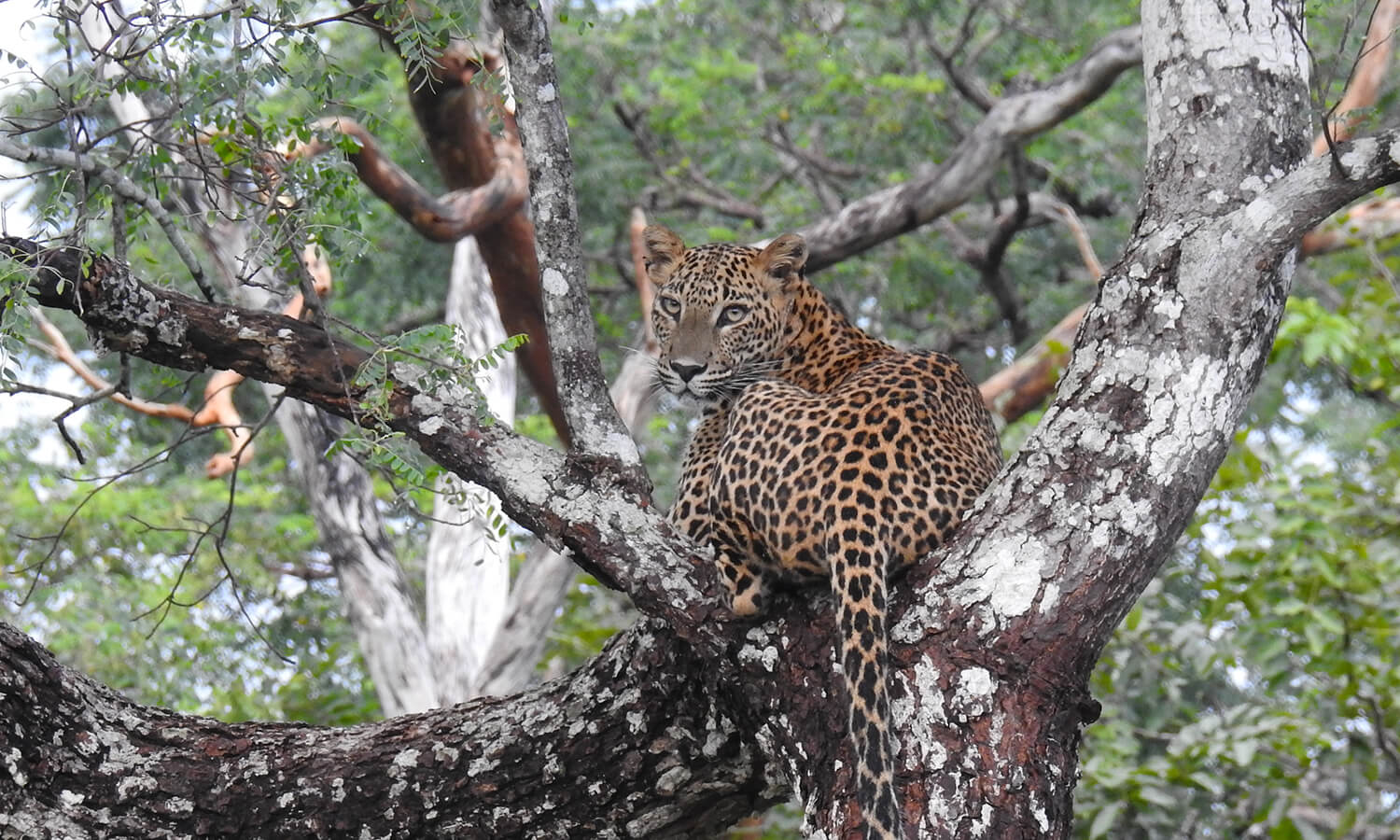
Why Full Day Tours?
We feel the full day tour is a positive way to get a great nature experience and a best impression of the national park.
For a dedicated safari experience more time in the park is an advantage; more time means a better chance to be lucky. Full day tours are long, hot, and hard. And they will usually deliver more results than a standard 3- hours morning/afternoon safaris.
Between 9.30 am and 3 pm the majority of visitors leave Yala and the national park is left more undisturbed by jeep traffic. This aspect combined with our routing into the park means that we are normally able to keep quite much away from congestions of jeeps.
But things are not always easy to control. Bottlenecks and overcrowdings can suddenly happen around sightings. We might be left with the choice to leave quickly, or stay inside the circus …
Sightings in the middle of the day are generally quiet and enjoyable with few other jeeps and visitors and leopard sightings frequently come after 9.30 am. After the morning jeeps have left …
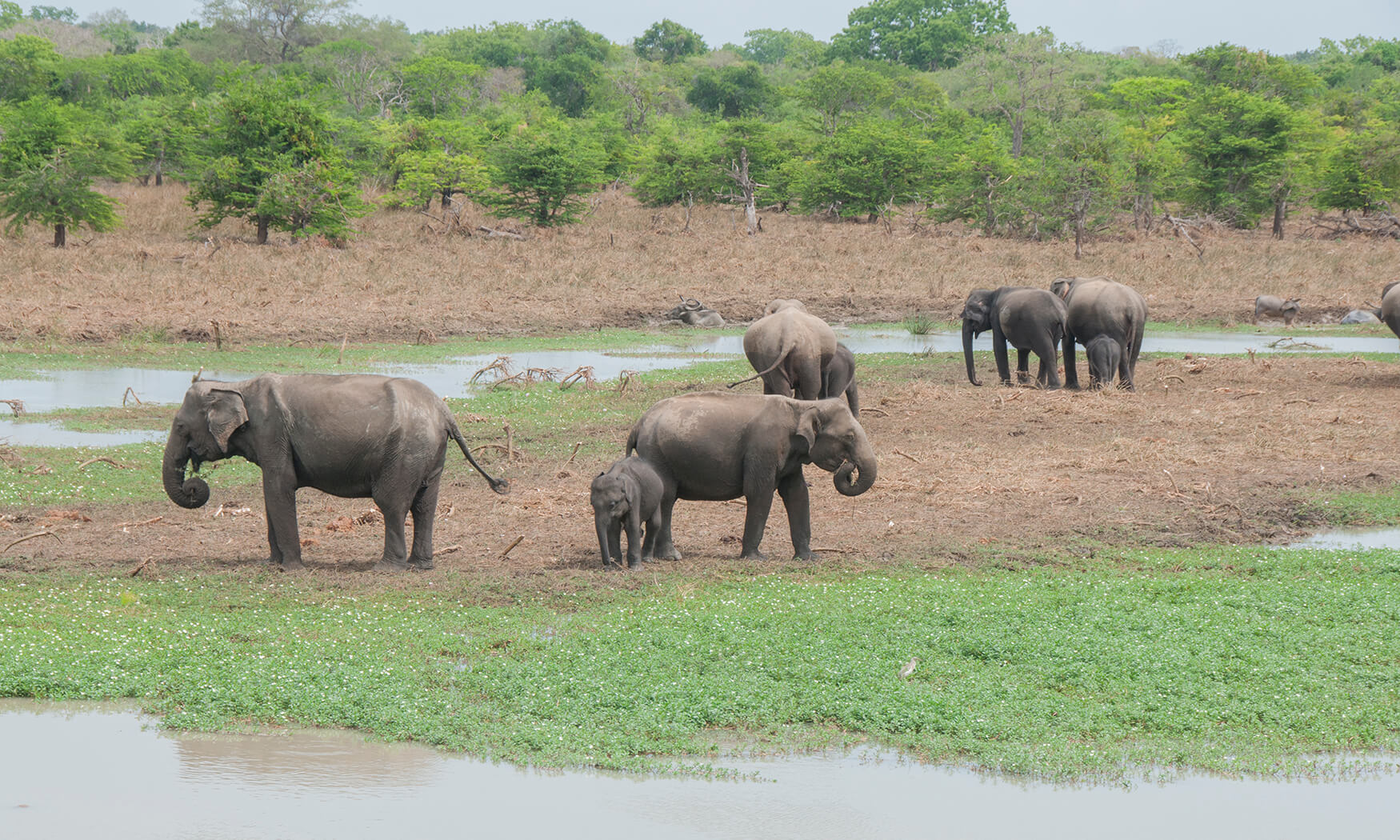
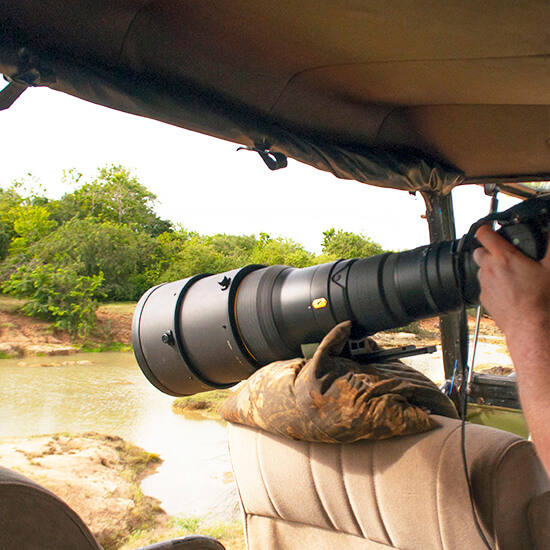
Daytime Life in the Park
The rule of the jungle is that most animal action takes place at night. Wild animals are primarily nocturnal. In the morning, shortly after sunrise, most animals will go to hidden places and rest, relax and sleep. This is a general observation.
We feel that wildlife sightings in the daytime hours are better than the reputation. In spite of the fact that most animals tend to stay in the shade and invisible – inside the bush – we do get sightings. Most days there will be plenty and exciting sightings of wild animals, also during the calm daytime hours.
Leopards may show signs of activity after 9.30 am, going to waterholes or start hunting, or found sleeping in a tree or on a shaded rock.
Elephants are often spotted in the early afternoon after the
morning recreation period. They usually relax from early morning until noon. In the mid day heat they may look for water holes for a drink, a bath and spraying mud on their skin. Mud works as sun creme for elephants. After bathing they begin to eat more, especially after 2 pm.
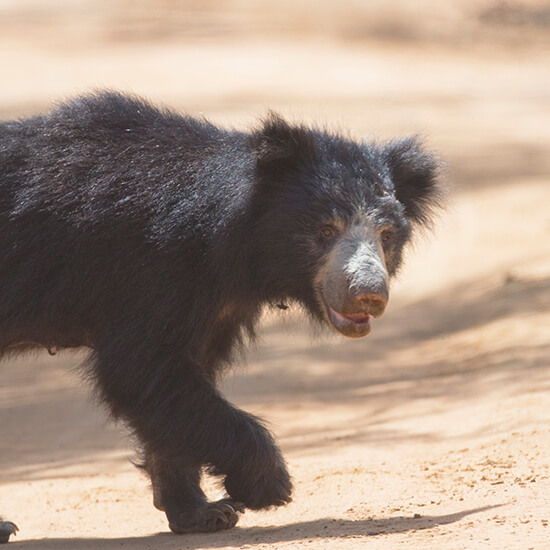
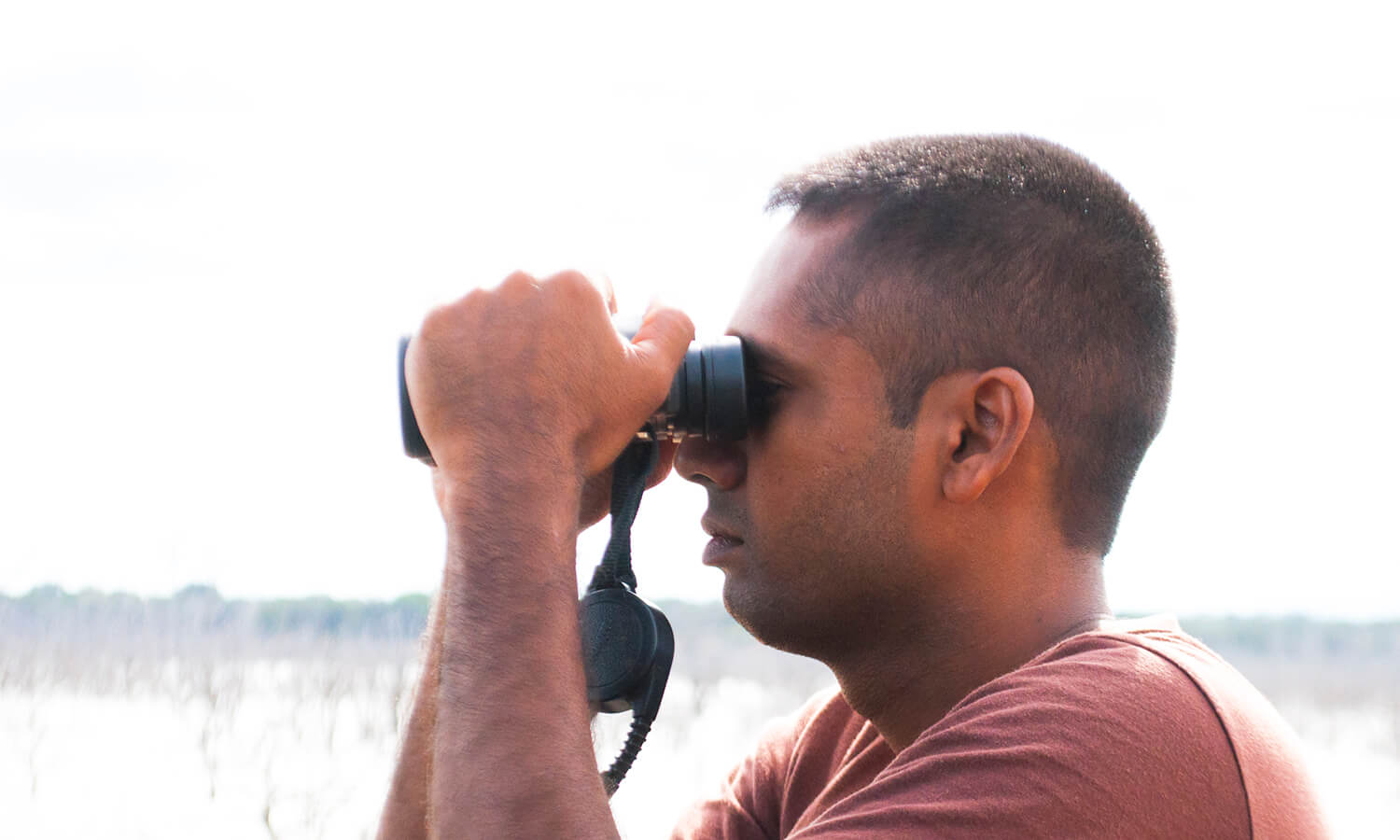
Lunch stop
12 pm - 2 pm
- There is a lunch break from 12 noon until 2 pm.
- According to park regulations driving is not allowed in Block 1 of Yala National Park 12.00 – 14.00.
- We will make two hours stop, in the park, on a beach on the south coast. Here it is allowed to get down from the jeep.
- A picnic lunch will be served.
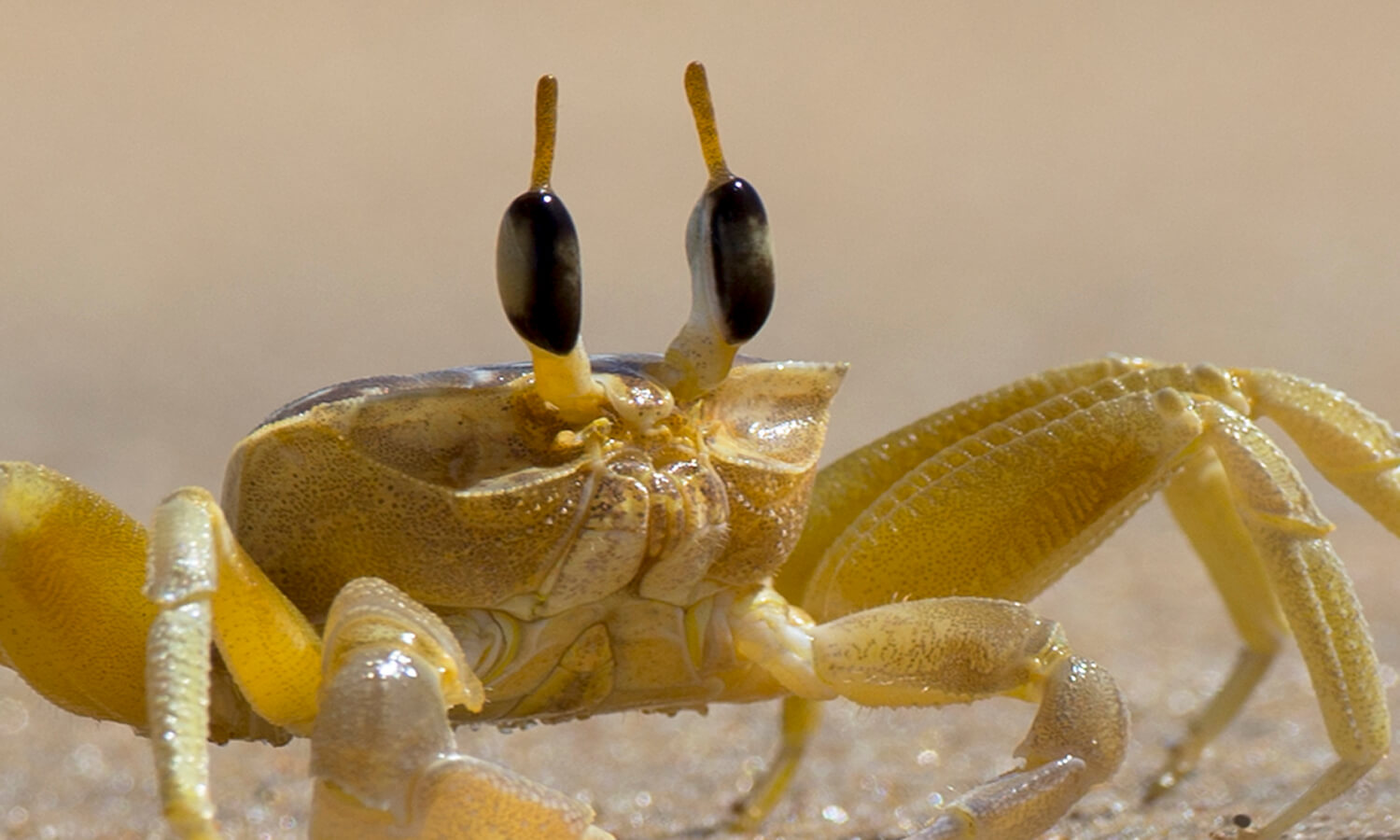

Lunch break location. South Coast of Sri Lanka. Inside Yala National Park Block 1

